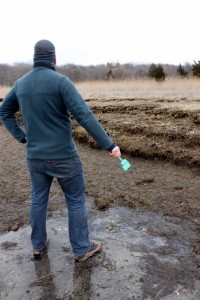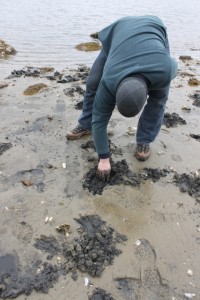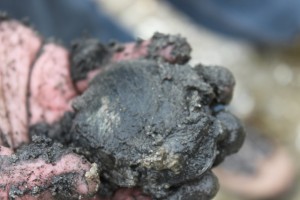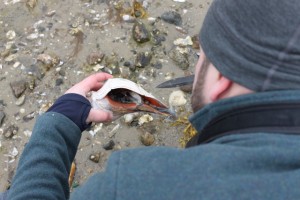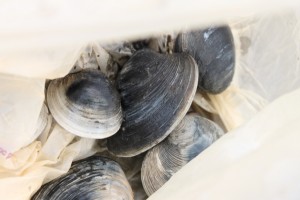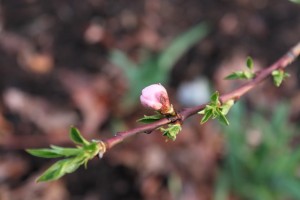I have always loved shellfish. Both sides of my family originated in New England, so maybe it runs in the blood. Growing up my family regularly visited the northeast coast every summer to see relatives and relax on the beach. At a young age I had already begun digging up razor clams and quahogs on the sand flats of Cape Cod Bay. I loved the clam chowder we could make from quahogs, but the razor clams always tasted rubbery to me. I was to later find out that we were simply not cooking them properly.
I am writing this post on our way back from another summer vacation in Massachusetts, and I thought it should be about my shellfish experience this year. For me, part of the fun of shellfish has always been harvesting them myself. Of course I like a good fried clam platter from Turks in Mattapoisett, but there is something very satisfying about digging up my own clams and mussels. As a general rule, shellfish are much more prevalent in sheltered waters versus open ocean. Let’s look at the different types of shellfish and where they can be harvested.

Mussels
Mussels can be found attached to most anything in the inter-tidal zone, but are most easily harvested from beds in flat sandy/muddy areas with plentiful sea grass growing.

These mussels are at Planting Island in Marion, MA. The mussels will be submerged ½ to 2/3 in the muck and need to be firmly pulled out. They will still have their ‘beard’ attached and may have seaweed stuck to their shells. Don’t clean off the beard until you are ready to cook them. Mussels are best prepared by steaming in a pot with wine or broth and plenty of aromatics. They are delicious and staple seafood of the Portuguese communities on Massachusetts’s south coast.

Clams
Clams in New England come in two main varieties in Massachusetts. Quahogs or littlenecks (cherrystone) are a thick shelled clam that is only differentiated by their size upon harvesting. They are delicious when eaten raw, but are the primary ingredient in traditional New England clam chowder (unlike Manhattan clam chowder, this is a creamy milk-based soup). The other variety is softshell clams (steamers). These clams are primarily consumed like mussels after they are steamed in an aromatic broth and dipped in butter prior to eating. These clams are also the clams used for fried clams or clam strips. Both varieties are found in sandy or muddy flats at low tide. The send up small siphons and can be spotted by the holes in the sand. Sometimes stepping near the hole will cause the clam to squirt ��water into the air. Quahogs reside very close to the surface, but softshell clams are much deeper dwellers and must be dug for vigorously as they will try to escape by burrowing deeper.
Oysters
In New England, oysters are present, but not as common as in warmer southern waters. They are usually found at low tide having washed off of theirs beds and ending up in the inter-tidal zone. They can be collected laying on the surface, but are not too frequent. Usually enough can be gathered for a small appetizer. A proper shucking knife, hand protection and a good demonstration is recommended before attempting to open oysters.
Scallops
Scallops are not usually encountered as they generally live far out to sea and dwell on the bottom. Occasionally, they will be washed into the inter-tidal zone and can be collected on the beach.
So what other issues surround shellfishing? Like most types of hunting/fishing, every state regulates the practice to one degree or another. Do you need a license to shellfish? The answer varies from state to state. Generally, most states allow a limited amount of harvesting for personal use with no license required. Additionally, you should always pay attention to fishery postings in a particular area prior to shellfishing. Conditions such as red tide or pollution can lead to serious sickness or death if warnings are not heeded. Also as a rule any shellfish that cannot hold its shell closed should be discarded out of hand as it could be diseased or dead and not fit for consumption.

So next time you are at the beach, look around and see what you can find. Dinner might be as simple as a few minutes work of gathering. Your efforts will be rewarded by a delicious meal fresh from the sea.
